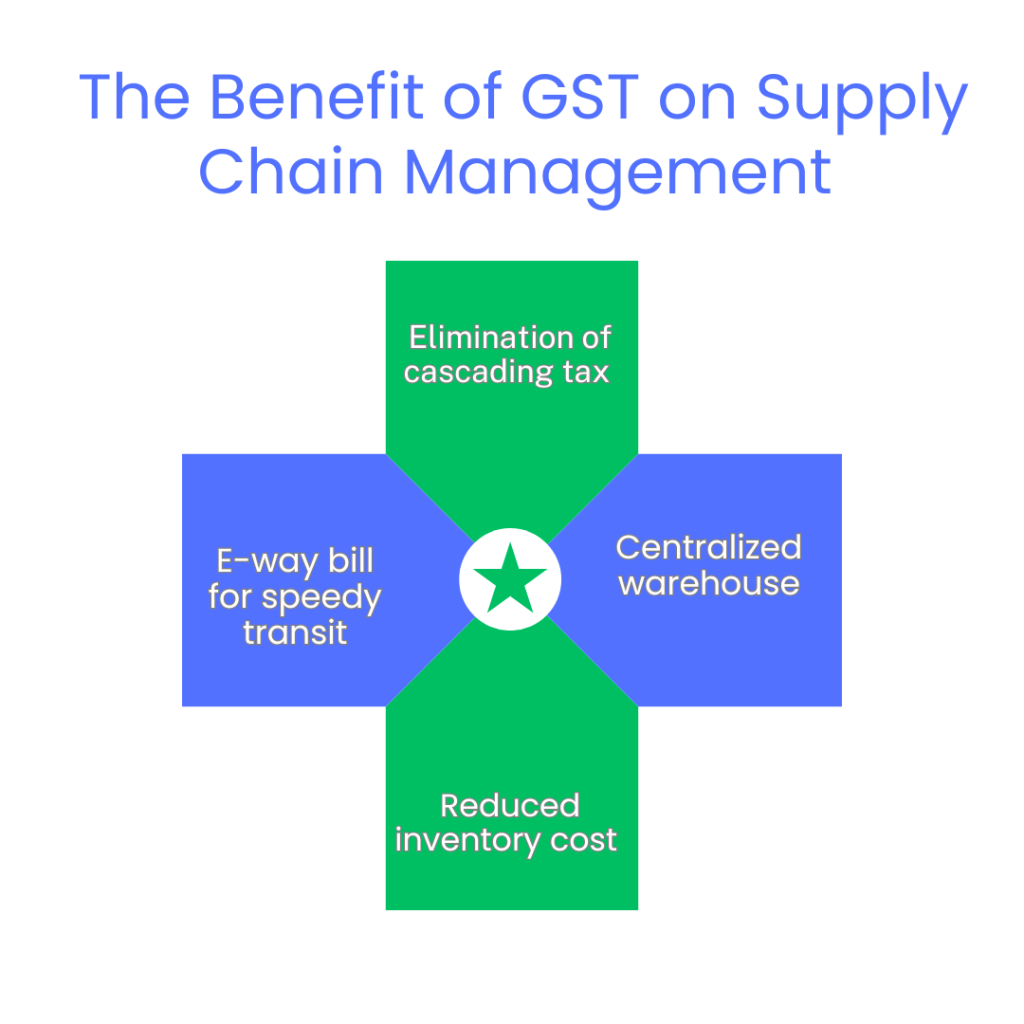GST and Supply Chain Management: How GST Facilitated Supply Chain Management?
The Goods and Services Tax has impacted supply chain management in various ways. In business, Supply Chain Management, or SCM, refers to sourcing and logistics. Sourcing means procuring and manufacturing goods and services. Imports, interstate, local, or domestic purchases, and stock transfers also refer to sourcing and logistics. SCM aims to improve efficiency, quality, productivity, and customer satisfaction. GST has a sweeping effect on businesses and it has subsumed several other indirect taxes. To learn further about how the GST has impacted the supply chain and logistics, continue on TaxDunia.

Supply Chain Management After GST
Elimination of Cascading Tax
Tax on tax system prevalent under the previous tax regime in the country is being replaced with the GST which is a destination-based tax. It has facilitated making the structure more transparent and reduced the overall tax burden on goods and services. Therefore, the efficiency and cost have been reduced resulting in improved supply chain management and transportation.
Centralization VS Decentralization of Warehouses
Under the previous tax regime, businesses had to have separate warehouses across the states to avoid inter-state tax, resulting in extra costs for logistics and management. However, under the new tax regime, there is no such need as the GST is destination based which means, the state where goods or services or both are consumed or used will levy tax. A centralized warehousing facility is available under the new tax regime, reducing the cost of logistics.
Inventory Cost and Management
A centralized warehousing facility has reduced the cost of inventory and supply management as there is no longer any need to maintain multiple warehouses. Streamlined taxation under GST has eliminated the inventory cost resulting in a better supply chain without much spending.
E-Way Bill Generation for Speedy Transit Time
Under GST, the E-way bill generation facility has enabled businesses to hold fewer documents due to digitalized recording, reduced physical interaction, and shorter checkpoint waiting times. E-way bills have sped up transit time, benefiting businesses and customers with faster delivery of goods or services.
Technology & GST on Supply Chain Efficiency
Automation in GST Compliance
Technological integration with supply chain management systems provide real-time visibility on tax liabilities and credits. This will also help businesses make informed decisions, optimize tax credits and enhance supply chain efficiency.
Digitalization in Meeting Compliance
Compliance under GST has become fully digitalized resulting in time saving for the businesses. It saves a lot of cost of organizations and less attention required to meet compliance. Businesses can focus on other activities to ensure consistent growth.
- Centralized warehousing facility under GST enables businesses to invest more in ERPs and automation systems
- Larger logistics facilities equipped with advanced technology reduce holding costs and enable product collaboration with other players
- Shorter transit times after e-way bill facility resulting in lower logistics cost
Filing GST returns, getting registrations, and other compliances under GST have been digitized. Technological advancement positively impacted supply chain management as businesses now have to spend less time on meeting compliance while they can spend more time on other activities.
Get Started with TaxDunia
Businesses can also claim Input Tax Credit under GST which contributes to improving cash flow and working capital. Efficient management of ITC claims can affect supply chain positively. Reach out to TaxDunia to get faster and more affordable services on finance and taxation. we offer personalized solutions for each unique need of our client.

